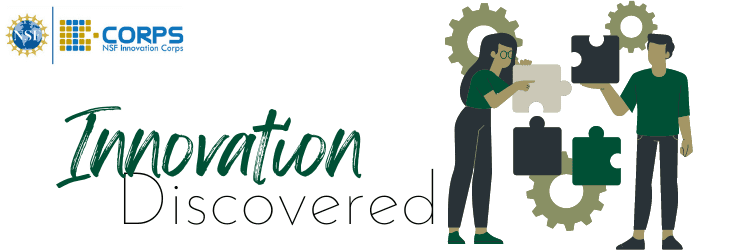Empowering Commercial Loan Specialists: The Importance of Understanding the Business Model Canvas and Lean Startup Methodology
As an entrepreneurship professor, I am passionate about empowering aspiring entrepreneurs to turn their dreams into successful businesses. To best serve students, I utilize the Business Model Canvas and Lean Startup Methodology, two powerful tools invented by Alex Osterwalder and Steve Blank, respectively. These frameworks provide a clear and concise way to map out a business model and test its assumptions through a rapid process of customer interviews. I see it as a rigorous and edifying feasibility analysis of a business idea and conducted after proper ideation and opportunity recognition. As a result, they can sometimes replace the traditional business plan if done robustly and realistically. Therefore, commercial loan specialists must understand and utilize the Business Model Canvas and Lean Startup Methodology. By doing so, they can stay competitive, make informed funding decisions, reduce the risk of failure, and support the growth of innovative businesses.
The Business Model Canvas identifies the key components of a business model, such as customer segments, value propositions, channels, customer relationships, revenue streams, key resources, key activities, key partnerships, and cost structure. By filling out each of these blocks, entrepreneurs can gain a holistic view of their business model and identify areas that need improvement. Using these tools, entrepreneurs can make data-driven decisions and avoid relying on untested assumptions. I’ve seen firsthand the impact of this approach on the success of new ventures.
The Lean Startup Methodology is a data-driven approach for refining a business model and increasing the chances of success. It involves developing a Minimum Viable Product, testing it with potential customers, and iterating based on feedback. But the importance of this process and framework goes beyond just startups. They have become standard tools in business and entrepreneurship programs worldwide, reflecting their effectiveness in launching and growing successful businesses. These tools are also for existing businesses looking to pivot or scale up. By understanding these frameworks, commercial loan specialists can better assess the potential of a business model and make informed decisions about funding.

Here are key reasons why commercial banks that support businesses should care:
- As the entrepreneurial landscape continues to evolve, commercial loan specialists must adapt to stay competitive.
- Understanding the Business Model Canvas and Lean Startup Methodology is critical for loan specialists because it allows them to make informed decisions about funding for startups and existing businesses.
- By learning these frameworks, loan specialists can better assess the potential of a business model and reduce the risk of failure, resulting in a higher success rate for funded ventures.
- The growing trend in business and entrepreneurship programs worldwide means that loan specialists need to be familiar with these tools to remain competitive.
- Familiarity with the Business Model Canvas and Lean Startup Methodology also enables loan specialists to support the growth of innovative businesses.
One important aspect of the Lean Startup Methodology is the concept of “getting out of the building” to gather primary data. This involves engaging with potential customers and stakeholders to test assumptions and gather feedback. By doing this, entrepreneurs can refine their business model and make informed decisions based on real-world data.
These data points demonstrate a data-driven approach to decision-making and reduce the risk of failure. Additionally, understanding how the entrepreneur has incorporated an “ability to scale” and has iterated their MVP through customer feedback can give loan specialists greater confidence in the business’s long-term success.
To make informed decisions about funding, commercial loan specialists should be familiar with the terminology used by entrepreneurs when presenting their validated data through:
- Customer discovery: What customer discovery process was used to identify potential customer segments?
- Product-market fit: What evidence is there of product-market fit, and how was this determined through a customer interview process?
- Customer validation and acquisition: What is the evidence that customers are interested in the product or service, and what are the plans for acquiring and retaining customers?
- MVP and pivots: What was the Minimum Viable Product (MVP), and how was it iterated upon through customer feedback to arrive at the current business model?
- Ability to scale: How has the entrepreneur ensured that the business has the ability to scale as it grows, and what plans are in place to maintain quality and customer relationships?
- Financial projections: What are the financial projections based on validated data, rather than just assumptions?
- Nine components of the Business Model Canvas: Customer Segments, Value Proposition, Channels, Customer Relationships, Revenue Streams, Key Resources, Key Activities, Key Partnerships, and Cost Structure.
The National Science Foundation has adopted this framework through the program I-Corps, which encourages the commercialization of innovative technologies. As a member of a team with a grant from the National Science Foundation, I am currently using this framework to find “product-market fit” for our innovation, and it has been a game-changer in helping us identify the right market and customer segments. These tools are essential for any entrepreneur looking to launch a successful business, regardless of the industry or technology involved.

According to Steve Blank, a renowned entrepreneur and educator, “A startup is a temporary organization designed to search for a repeatable and scalable business model.” For example, Lumos Solar, a manufacturer of high-performance solar modules for commercial and residential applications, used the Business Model Canvas and Lean Startup Methodology to map out their business model, test assumptions, and iterate quickly. By doing this, they were able to refine their business model and increase the chances of success. They were able to demonstrate to the bank that they had a clear and concise business model and a data-driven approach to decision-making, which made the bank more confident in their ability to repay the loan.
As an entrepreneur, I know the importance of the Business Model Canvas and Lean Startup Methodology in launching and growing successful businesses, and I wish I had known about them earlier in my career. To help commercial loan specialists familiarize themselves with these tools, we offer customized classes and workshops. By understanding and utilizing these tools, loan specialists can make informed decisions about funding for innovative and successful businesses, promoting the overall growth of the economy. These frameworks provide a clear and concise way to map out a business model, test its assumptions, and make data-driven decisions. The Lean Startup Methodology encourages a “learning by doing” approach, allowing entrepreneurs to refine their business model and make informed decisions based on real-world feedback.
Here is an episode on our podcast that touches on two foundational sections of the business model:
